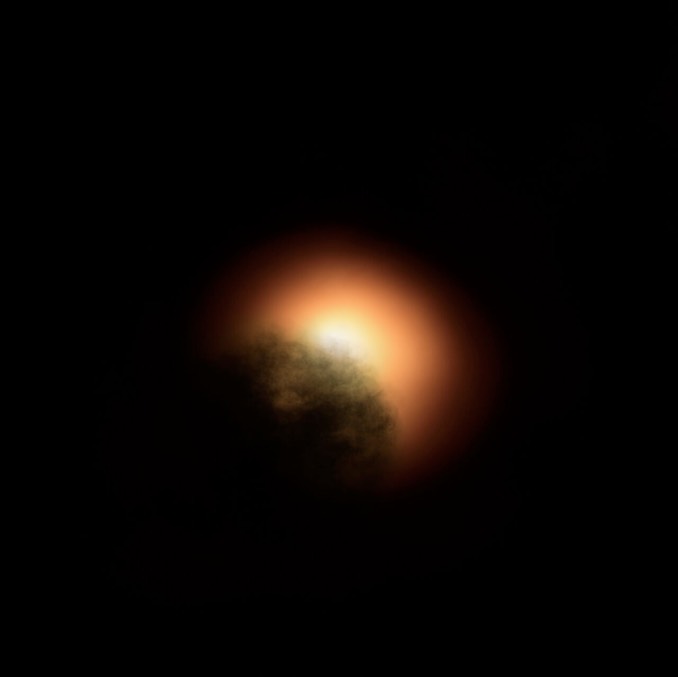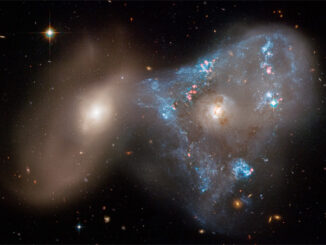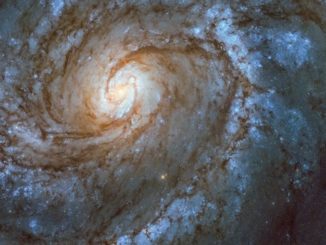
In October 2019, the red supergiant Betelgeuse, the brilliant red star in Orion’s left shoulder, suddenly started dimming. By February 2020, the giant star had dimmed to less than a third of its normal brightness, prompting widespread astronomical interest and internet speculation on the possible cause.
Now, using ultraviolet observations by the Hubble Space Telescope, researchers say the dimming likely was caused by an enormous eruption that ejected a vast cloud of superheated material that then cooled, forming a dust cloud that blocked out light from about a quarter of of Betelgeuse’s surface.
“With Hubble, we see the material as it left the star’s visible surface and moved out through the atmosphere, before the dust formed that caused the star to appear to dim,” said Andrea Dupree, associate director of the Harvard-Smithsonian Center for Astrophysics. “We could see the effect of a dense, hot region in the southeast part of the star moving outward.”
“This material was two to four times more luminous than the star’s normal brightness,” she continued. “And then, about a month later, the southern hemisphere of Betelgeuse dimmed conspicuously as the star grew fainter. We think it is possible that a dark cloud resulted from the outflow that Hubble detected. Only Hubble gives us this evidence of what led up to the dimming.”
Betelgeuse is a massive supergiant nearing the end of its life, so large that its surface would extend beyond the orbit of Jupiter if it were at the center of Earth’s solar system. It naturally pulses, brightens and dims, in a 240-day cycle.

When it eventually finally runs out of nuclear fuel, the giant star will no longer be able to counteract the inward crush of gravity and the core will collapse, triggering a supernova explosion.
Dupree’s team began monitoring Betelgeuse early last year as part of a three-year study to learn more about variations in the star’s outer atmosphere. Spectra measuring strongly ionised magnesium indicated super-heated material moving at some 200,000 miles per hour passing from the star’s surface into the outer atmosphere.
After moving millions of miles away, the material cooled enough to form dust, effectively blocking out starlight as viewed from Earth.
Dupree said she does not know what triggered the eruption, although it may be related to the star’s pulsation cycle. Some astronomers have suggested the sudden dimming could be a pre-supernova event.
“No one knows what a star does right before it goes supernova, because it’s never been observed,” Dupree said. “Astronomers have sampled stars maybe a year ahead of them going supernova, but not within days or weeks before it happened. But the chance of the star going supernova anytime soon is pretty small.”



